Brown horses have fur ranging from a bright reddish-tan to an almost black chocolate shade. Under their fur, they have dark skin. Brown horses often have white markings on their face and legs.
Here are some interesting facts about brown horses:
- Most horse owners don’t refer to horses as “brown,” but instead by one of the subtypes of brown horse color: chestnut, sorrel or bay.
- About 25% of horses are brown.1 Brown horses are very common! Brown horses are so common that all three of the unicode horse emojis: 🏇🐴🐎 are brown!
- The average price of a brown horse aged 4-6 years old is $13,2461 However, this includes elite show horses. Many brown horses sale for between $3,000 and $5,000
- Brown horses are popular for all horse sports, including horse racing, rodeo events, jumping, and trail riding. Brown is an especially common color for Quarter Horses and Thoroughbreds.
- In fact, the most expensive horse ever sold, a racehorse stallion named Fusaichi Pegasus was a brown horse with a black mane and tail. This stallion sold for 70 million – yes, million! – in 2000.
Brown horses rarely turn heads for their color, but with the right training and handling they are steadfast horses that earn their keep- often scoring roles in movies and pictured in the winner’s circle at elite events like horse races and Olympic games.



Brown Horses: Common vs Rare:
Brown horses are extremely common.
In our analysis of horse classified ads across 3 popular horse sale sites in 2023, we found that about 25% of all horses are brown (chestnut, sorrel, or bay). This number may be higher in breeds where the color is common (Quarter Horses, Thoroughbreds, Morgan Horses, etc) and lower in breeds where the color brown is rare (such as Lipizzaners, Percherons, etc).
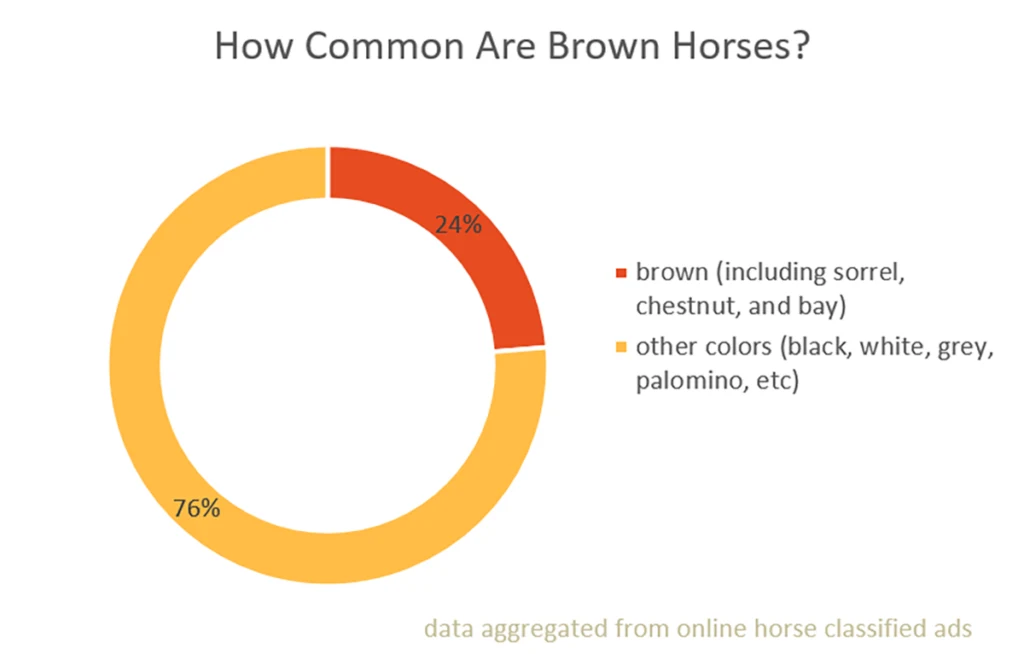
What’s a Brown Horse? Bay, Chestnut, & Sorrel
“Brown, as a horse color term, is confusing, and horse owners and breeders use the term in a few different ways.”2 Most horses that look “brown” are actually bay, sorrel, or chestnut.
Recognizing Bay Horses
Bay horses are easy to recognize, they come in various shades of brown but one thing stays consistent: a black mane, tail, and legs. Any brown horse with a black mane, tail, and legs is a bay horse.
Some researchers argue that brown, in genetic terms, isn’t technically even a color for horses. In the authoritative textbook Equine Color Genetics, the author states that horses aren’t really brown as much as they are categorized as brown when they exhibit other more specific color patterns. Specifically, “the brown horse color name was in use long before genetics became a science and has left behind this unfortunate nomenclature problem”3
Recognizing Chestnut & Sorrel Horses
This can be tricky. Genetically there’s not much difference between a sorrel and a chestnut horse, but for many “old timers” in the horse industry- a sorrel horse is a light brown horse while a chestnut has a reddish-brown hue. Chestnut horses are a little like the “red heads” of the horse world- complete with a (totally unfounded!) rumor that chestnut horses are harder to tame and train.
| Characteristics | Brown Horse | Sorrel Horse | Chestnut Horse |
|---|---|---|---|
| Body Color | Can range from light reddish-brown to dark, rich mahogany | Typically reddish or copper-red | Can range from light, golden hue to deep, red-brown |
| Mane and Tail Color | Usually black | Same as body color or darker | Same as body color |
| Common Breeds | Thoroughbred, Quarter Horse | Quarter Horse, Belgian Draft | Thoroughbred, Arabian |
| Unique Features | Black mane and tail provide a striking contrast | Distinct reddish or copper hue | Mane and tail match the body color |
“The chestnut or sorrel horse is a basic color pattern. The skin color is black or brown, and the hairs are red. The lighter-colored horses are called “sorrel horses”, where the darker pattern is “chestnut.” The very dark red chestnut horse is called a “liver chestnut.” All of these colors actually refer to brown horses.”4
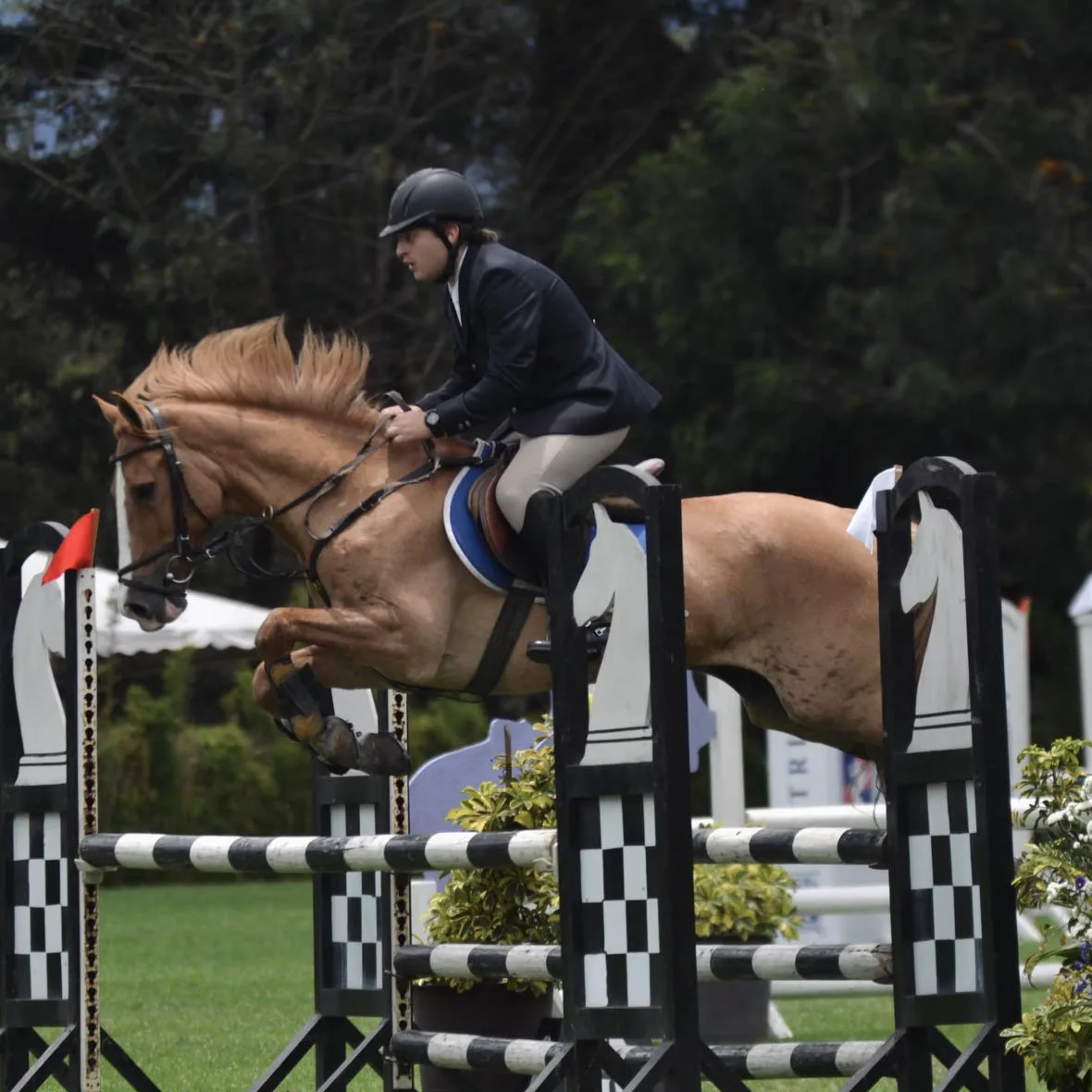
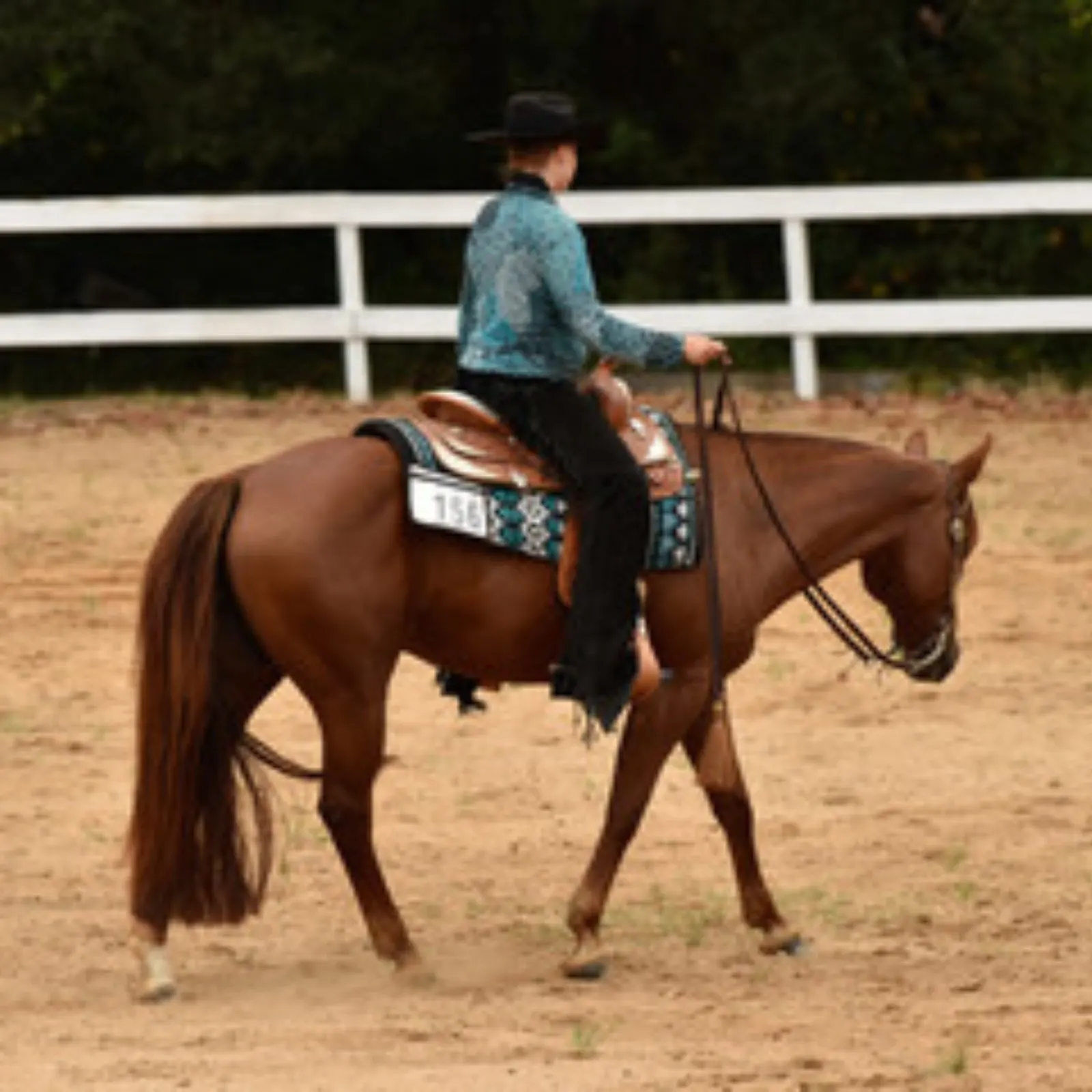
Buying a Brown Horse 💰🐎
A horse being brown rarely impacts the sale price. While color breeders often breed for a unique color, brown horses often result from breeding with different goals. Afterall, if you want a horse to win elite horse sports, you probably don’t care what color it is, right?
For this reason, brown is especially common for thoroughbreds.
💡 At the 2023 Summer Sale at Keenland – an auction where young racehorses are sold to elite buyers- 100% of the most expensive horses were brown. These 5 brown horses sold for an average of $360,000 each!
Luckily, The price of a brown horse can vary greatly depending on factors like breed, age, health, training, and the achievements of it’s parents. On average, a healthy, decently saddle-trained, unregistered and unremarkable brown horse might cost between $2,500 to $5,000. However, the price can soar if the market values the horse’s breeding or skills.
As you can tell from the infographics below, it’s slightly more common (about 2%) for a brown horse to be priced under $2,500, compared to all colors of horses, and it’s slightly less common (3%) for a brown horse to be priced over $20,000. However, our research shows that brown horses’ prices are roughly the same as all-color average prices. For example, about 30% of both brown horses and all colors of horses are listed for sale between $5000 and $10,000 USD.5
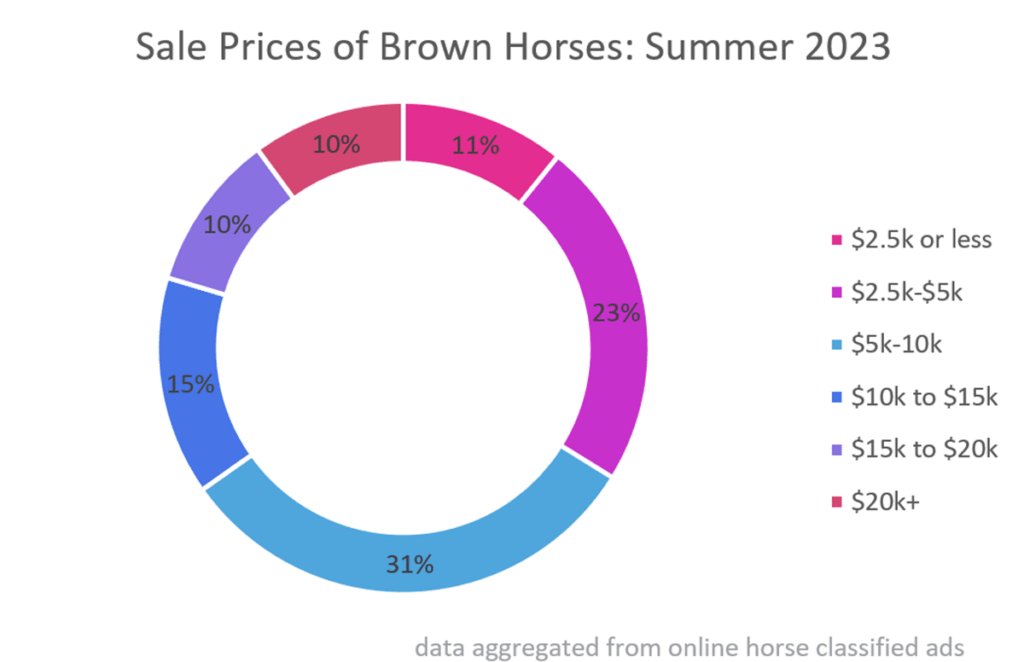
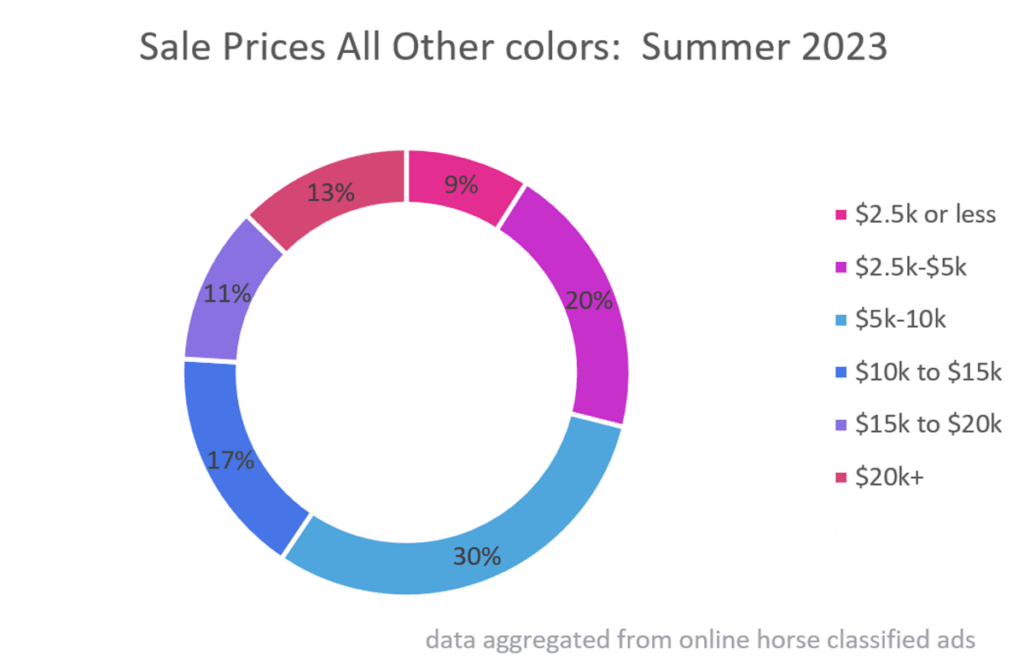
The Seal Brown Horse 🌑
The only horse color that is technically offically called “brown” is the seal brown horse. Seal brown is a color produced by genes that aren’t fully understood.
Seal brown horses have a blackish-brown body, with lighter areas around the muzzle, eyes, flank, and behind the elbow. They are sometimes mistaken for black buckskins and smoky black horses.
“A dark brown horse is sometimes called seal brown, and the light brown horse is sometimes called a dark bay”6
“Brown, in horse color terminology, is used to refer to colors that are darker than bay and lighter than black.” 7
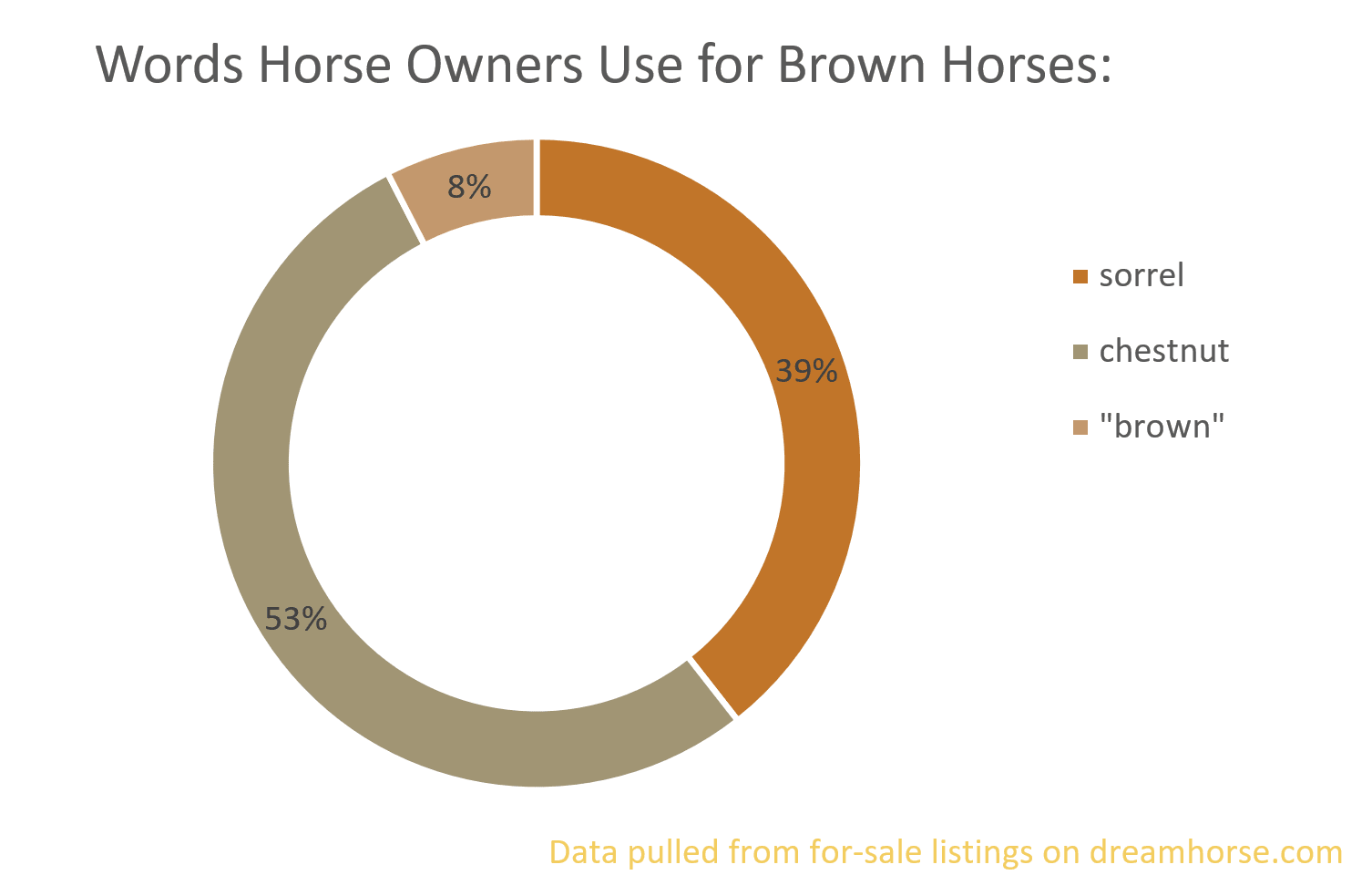
Ideas for Names for Brown Horses 📝
Deciding what to name your brown horse can be a fun but challenging task. Your horse’s name should be a reflection of its personality, appearance, and/or bloodlines. Here are a few common names that work wonderfully for brown horses:
| Male Brown Horse Names ♂️ | Female Brown Horse Names ♀️ |
|---|---|
| Rusty | Hazel |
| Mocha | Caramel |
| Brick | Cocoa |
| Teddy | Maple |
| Toffee | Ginger |
| Tater | Amber |
| Bruno | Chestnut |
| Java | Truffle |
| Hershey | Penny |
| Bourbon | Cinnamon |
The Symbolism of Brown Horses 🌟
In various cultures, a brown horse symbolizes stability, reliability, and resilience. However, what a brown horse means in a dream for one person might mean something else for another person.
Jungian Psychology Dream Interpretation of Brown Horses
Jungian psychology is a branch of psychology that interprets dreams through a psychological lens. Classical Jungian theory would ascribe meanings based on the horse archetype and the color brown:
- Strength
- Freedom,
- and Earth-Connected
However, Clarissa Pinkola Estes, my personal favorite writer from the Jungian tradition, approaches dream interpretation from a unique and more personal perspective. In her work, she emphasizes the significance of dreams as powerful messages from each person’s individual unconscious and cultural heritage. She views dreams as creative and poetic language, speaking in metaphors, symbols, and archetypal images.
In her book, Mother Night: Myths, Stories, and Teachings for Learning to See in the Dark, teaches a different approach to dream interpretation. Her method follows these steps.
How to Interpret Your Dream about Brown Horses
- Along the top of a sheet of paper, write the major themes of your dream. In this case, “brown horses,” “riding a brown horse” “being clothed in armor” “going from one city to another” etc.
- Under each header, write what these things or concepts mean to you personally.
- Then, in another row, write what these things mean within your family, culture, or heritage.
- Finally, if needed, add another row writing what each image from your dream represents to the larger, global world.
- Once you’ve completed all the rows, search for a connecting thread. Often, stringing together images or concepts from a dream using personal and cultural narratives reveals far more about our unconscious than a cold and distant psychoanalytic or representational idea of dream interpretation.





Brown Horse Genetics
So, how does a horse get brown? Horses are brown because of a special gene that causes brown color in horses. This gene, known as the At allele, sits at a place called the agouti locus in the horse’s DNA. Think of the agouti locus like a house address where the At allele lives. Scientists have studied this gene, and they can now test for it, which proves that it is responsible for the brown color in horses.
Now, brown horses must have at least one type of gene known as the E+ allele. This gene acts like a color factory that produces a type of black pigment called eumelanin. This black pigment is the raw material for black, brown, and bay horse colors and their variants.
FACT: Researchers have found that flies – the eternal irritant to horses and their riders – prefer black or brown horses to other colors.8.
Closing Thoughts on Brown Horses
From their striking colors to their deep-rooted symbolism, there’s much to admire about ordinary but soulful brown horses.
While you might think that brown horses are common, because of how horse colors are categorized, they’re actually rather rare! “Some breeders say that the color name brown ‘is used only by people with one horse or with 200.’ The point of this comment is that brown is more likely to be used by inexperienced observers, or those owning so many horses that identifying the animals requires many subdivisions of color.”2
Whether you’re a horse owner, a potential owner, or simply a curious reader, we hope this guide has helped you deepen your appreciation of brown horses. 🐴💕
- LearningHorses.com’s research team did a detailed analysis of the horse market in Summer 2023. We used aggregated data from the 3 most popular horse classified ads sites to determine statistics about horse prices, the rarity of colors, and the popularity of certain types of horses for certain disciplines. [↩] [↩]
- Bellone, R., Sponenberg, D. P. (2017). Equine Color Genetics. Germany: Wiley. Pg 48 [↩] [↩]
- Bellone, R., Sponenberg, D. P. (2017). Equine Color Genetics. Germany: Wiley. Pg 32 [↩]
- Evans, J. W. (2000). Horses: A Guide to Selection, Care, and Enjoyment. United Kingdom: Henry Holt and Company. [↩]
- LearningHorses.com’s research team did a detailed analysis of the horse market in Summer 2023. We used aggregated data from the 3 most popular horse classified ads sites to determine statistics about horse prices, the rarity of colors, and the popularity of certain types of horses for certain disiplines. [↩]
- Evans, W. J. (1990). The Horse. India: W. H. Freeman. [↩]
- Bellone, R., Sponenberg, D. P. (2017). Equine Color Genetics. Germany: Wiley. Pg 32 [↩]
- MATTER, C. (2010). Why horses wear white. Appl. Phys. Lett, 96, 053107. [↩]
